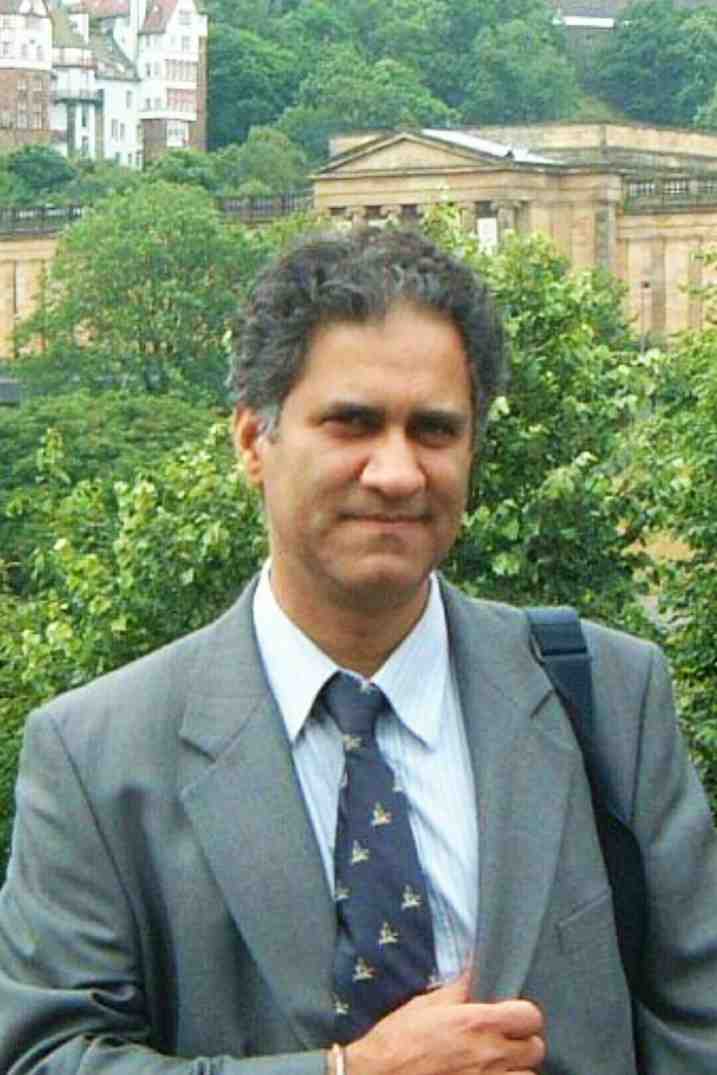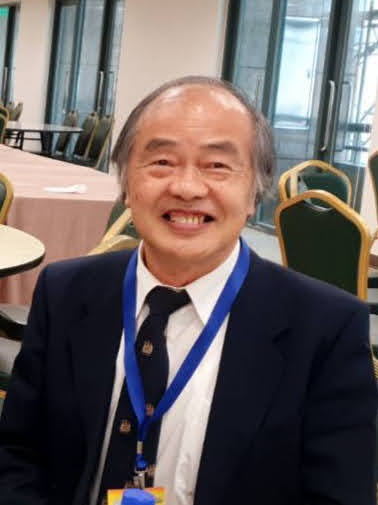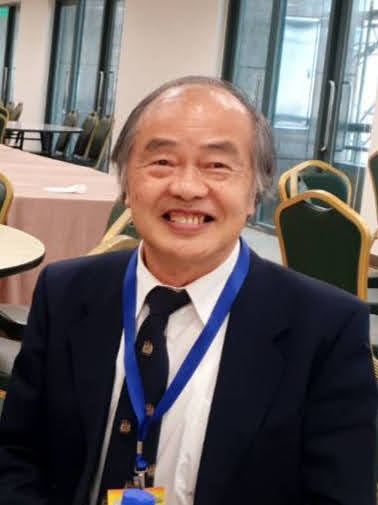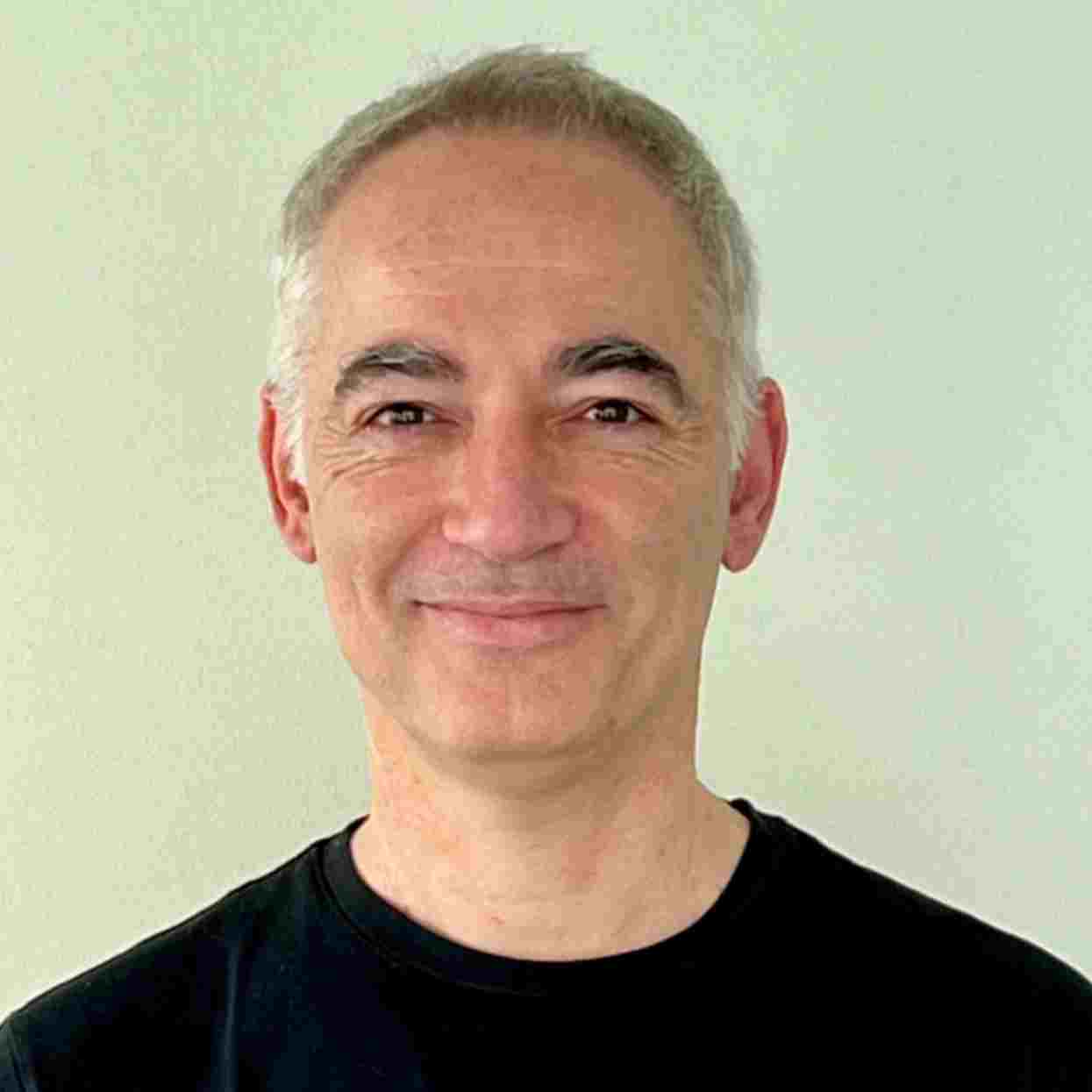AUCTORES
Globalize your Research
Research Article | DOI: https://doi.org/10.31579/2767-7370/136
*Corresponding Author: Jan Myjkowski, Otolaryngology Clinic in Mielec, Poland.
Citation: Jan Myjkowski, (2025), The Auditory Cell: A Hearing Organ Receptor, J New Medical Innovations and Research, 6(3); DOI:10.31579/2767-7370/136
Copyright: © 2025, Jan Myjkowski. This is an open access article distributed under the Creative Commons Attribution License, which permits unrestricted use, distribution, and reproduction in any medium, provided the original work is properly cited.
Received: 09 January 2025 | Accepted: 21 February 2025 | Published: 31 March 2025
Keywords: auditory cell; hearing organ receptor; auditory information; sound signal amplification; tip-links mechanism
In published studies, much attention is paid to the path that auditory information is transferred to the receptor by means of sound wave resonance in the cochlear fluid with natural vibrations of the basilar membrane. Much focus is put on the traveling wave on the basilar membrane and to liquid flows in the inner ear that supposedly trigger the tip-links mechanism. Sound signal amplification is explained by contractions of external auditory cells and pulling up of the basilar membrane. The mechanism of how sound wave energy works on the hearing receptor is not discussed.
In the study, particular emphasis is put on the change in the pathway taken by the signal on its way to the receptor and the processes that are taking place in the auditory cell alone, including the receptor, with respect to receiving, processing, and transferring auditory information. Attention was drawn to the manner in which the signal is amplified on its way to the receptor. All the transformations occur on a molecular level and a sub molecular level.
Bekesy’s travelling wave theory holds that sound wave resonance in the cochlear fluid with natural vibrations of the basilar membrane is the mechanism that transfers information to the receptor. It provides a description of the cochlear fluid flow and the tip-links mechanism that supposedly transfer and encode auditory information. Soft tone amplification is purely mechanical [1,2].
It should be noted that:
a) natural vibrations of the basilar membrane of mammals that can hear sounds up to 100 kH do not create any resonance with high-frequency sound waves.
b) a sound wave is a longitudinal wave, a travelling wave is a transverse wave, the resonance of these waves is unlikely, whereas precise transfer of information is impossible.
c) basilar membrane vibrations in the cochlear fluid are dampened. If the dampening of the reflected wave is greater than the energy of the incident wave, no resonance occurs. This situation pertains to audible threshold and peri-threshold tones. This points to a different pathway.
d) the tones that are audible are tenth of a millisecond long, whereas 1 or 2 periods of a wave does not cause resonance of the wave and the traveling wave [3,4].
e) the basilar membrane ballasted with the organ of Corti and connective tissue on the lower surface, is vibrating in the cochlear fluid that substantially dampen the vibrations [5].
f) the speed of sound wave propagation in the cochlear fluid is 1450 m/s and is constant, whereas the speed of the travelling wave is variable ranging from 50 to 2.9 m/s (Bekesy). The difference in the speed varies from 29 times to 500 times in the vicinity of the cupula. With the wave speeds that different, information transfer is impossible,
g) the transfer of the quantized energy of a sound wave, harmonics, phase shifts, and the quantitative via the travelling wave, via the cochlear fluid and the tip-links mechanism is impossible. The energy that codes the auditory information is transmitted by the sound wave without a shift in the mass of the environment. In the same way the information is transmitted also via the bone labyrinth of the cochlea to the receptor [6],
h) the rocking motion of the stapes at a high frequency disrupt the transfer of information on the cochlear fluid. When one half of the footplate is generating progressive motion, the other half is generating a regressive wave at the same time.
i) the tympanic membrane fails to reflect 99.9% of sound wave energy. It absorbs and transmits about 80% of the sound wave energy to the middle ear, part of the energy is transferred onto the bone labyrinth of the middle ear. Part of the sound wave energy from the ossicles of the middle ear is transmitted onto the bony labyrinth of the cochlea.
j) in stapedotomy surgery, there is no high-frequency sound transmission.
k) in middle ear, soft tones are amplified by 33 dB whereas in the inner ear, by 40-50 dB, and continue to be heard as soft tones.
l) decreasing sound wave energy on its way to the receptor precludes hearing of threshold sounds.
m) the latency in ECoG testing of soft tones at 1.5 ms precludes signal propagation via the travelling wave, the cochlear fluid, and the mechanical amplification.
Mechanical amplification of soft tones by means of an OHC contraction is time-consuming. The received tone has to trigger depolarisation of OHC so that an OHC contraction can take place. Each depolarization of a cell causes an OHC contraction – including very loud tones. There is a problem regarding amplification of high-frequency sounds. An auditory cell cannot shrink down to 100 kHz. Depolarization of a cell is determined by the work of ion channels of the cell wall [7].
Pulling by the basilar membrane increases amplitude of the unknown wave that runs across the basilar membrane at that time. The information carried by both waves simultaneously gets mixed up. In the case of multi-tones, soft tones that are amplified reach the centre with a delay, separately from the transmitted information of loud tones. They distort subsequent information transmitted at that time that require no amplification.
The tip-links mechanism does not serve its role in the information transfer close to the threshold of hearing. The sound wave amplitude, which is 8 picometres on entry and fades on its way through the basilar membrane and the cochlear fluid by about 100 times [8], cannot lean or bend auditory hair cells. The amplitude of this wave is about a million times smaller than the diameter of the auditory hair cells. The movements of the hair cells supposedly code and transmit information to the molecular system of the hearing receptor by tightening cadherin filaments. How do cadherin filaments transfer the energy of overtones, phase shifts, and the quantitative to sound-sensitive molecules? That is not possible. They do not ensure energy quantization.
The above reservations pertaining to Bekesy’s travelling wave theory allow one to put forward a new hypothesis about the pathway a signal takes to the receptor as well as the molecular mechanism for receiving and processing auditory information. Coded with quantized sound wave energy, auditory information is transmitted from the auricle, the middle ear and the lateral wall encircling the oval window to the bone labyrinth of the cochlea, further straight to the hearing receptor. The transfer takes place on a molecular level and an electron level. Further analysis and processing of the information takes place in an auditory cell. Low frequency sounds that are easily transmitted through all environments propagate also via the cochlear fluid with the reservation that the information is transferred by a sound wave without moving the mass of the environment [9].
Auditory cell
The sound wave reception mechanism with a transformation and transmission of mechanical energy to the electrical energy of the receptor further to the energy of chemical bonds of intracellular information messengers takes place on a submolecular level and an electron level. The stimulus adequate for the hearing organ is sound wave energy transmitted by vibrating particles of the environment to the receptor. All the atoms in the matter of the environment that transfers sound waves and molecules and atoms that comprise the hearing receptor are in constant motion. It is progressive motion – oscillatory and rotatory motion or a mixture of the above. Motion is linked to kinetic energy of molecules. Kinetic energy aside, molecules of the receptor have also potential energy composed of chemical bonds and electrostatic attraction and electromagnetic forces. The sum of these energies makes up the inner energy of a molecule’s body. The total inner energy is determined also by temperature and the mass of the molecule. Supplying external energy - in the case of a hearing receptor – that of a sound wave, to the molecule of the (hearing) receptor causes an increase in the internal energy of the sound-sensitive molecule that receives the signal.
The vibrating particles of a sound wave have a positive, negative, or neutral electric charge. Neutral particles transfer potential energy determined by the speed of vibrations and frequencies and electron energy by means of contact of the electron clouds of molecules. Each atom has electrons that form an electron cloud around the nucleus of the atom. The size of that cloud is determined by the number of orbits that electrons are positioned on. An electron can change its orbit; however, to jump to an orbit closer to the nucleus, it has to receive additional energy. Changing 1 orbit from 2 to 1 requires 3.4 eV. These shifts are quantized, meaning that there is either a jump or no jump – with no other possibility in-between. If an atom in a molecule of an acceptor receives a quantum of energy from another atom or a particle (sound wave), then the electron of the acceptor jumps to an orbit that is closer to the nucleus – its internal energy rises – incrementally – quantized. The so-called excited state of an atom that, unlike the basic state, is impermanent, lasts about 10-8 seconds and immediately strives to return to the basic state by emitting 1 photon of energy – when the issue lies in 1 atom moving by a single orbit. If in the combination a molecule of the receptor + sound wave energy there are countless jumps like that, or jumps by 2 orbits or move, then there are 1020 possibilities for transmitting various kinds of quantized energy. This yields unlimited number and diversity of transmitted bits of information. The duration of simple shifts in energy between molecules is 10-14 s. More complex transformations last 1,000 times longer but still, that is 10-11 s. The information-coding energy is transferred from the sound-sensitive molecules that receive the information reaches to the molecules tasked with mechanically-gated potassium ion channels. The transferred energy acts on the activation gates and inactivation gates of the potassium ion channel that determine the flow of potassium from endolymph to the auditory cell. The energy of a sound wave causes changes in the rotation of atoms, shifts in the angles of bonds, oscillation, consequently leading to conformational changes in molecules, while the formed conformers by changing their shape and size, by fulfilling their role involving closing and opening of an ion channel. This role is regulated by the information encoded in the sound wave with the precision of electron energy.
The mechanically-gated potassium ion channel has a selectivity filter that ensures flow of potassium ions exclusively. With the potassium ion channel fully open in 1ms as many as 6,000 potassium ions flow from endolymph into the auditory cell.
The inflow of positively charged K+ ions into the cell triggers depolarization of that cell. If that change in the membrane potential increases over the level ca. 10 mV, potential-dependent Ca++ ion channels are activated. Local depolarisation increases, subsequent depolarisation-dependent Ca++ channels and Na+ channels on the lateral surface of auditory cells open up. The interior of the cell has a negative potential - 80 mV, owing to a high number of proteins with a negative charge and the ongoing work of sodium-potassium pumps that discharge 3 sodium ions outside the cell in exchange for 2 potassium ions imported into the cell. Outside the cell, there is a high level of Na+, Ca++, and Cl-, which combined with the high electric potential creates a high electrochemical potential for sodium and calcium ions. The wave of Ca++ ions flowing into the cell causes calcium ions to be released from mitochondria, endoplasmic reticulum and the nucleus of the cell. The level of calcium outside the cell is 10,000 times higher than the basic calcium level in the cell that can increase even up to 100 times. Following excitation, the membrane potential changes to receptor potential. Inside the cell, calcium bonds with calcium-dependent proteins, thus changing their properties. The most important one is calmodulin.
The information is divided into constitutive actions related to the ordinary role of a cell and regulated actions related to producing, transporting and discharging the transmitter to the synapse. After the calcium level is increased and the information is transferred, the calcium level in the auditory cell drops instantaneously. Calcium pumps and ion exchangers discharge calcium ions outside the cell, and some calcium is imported back to the mitochondria, endoplasmic reticulum and the nucleus of the cell. The lower the calcium level in the cell, the more the cell is susceptible to receiving a new signal. Intracellular transmitters (messengers), varying calcium levels and the action of intracellular proteins are responsible for intracellular amplification [10].
An important factor in the forming of the membrane potential is the different permeability of that membrane for different ions. The cell membrane at rest is most permeable to potassium ions; for this reason, the resting potential of the cell membrane is similar to the resting potential of potassium. The natural drive toward an equilibrium state regarding concentration and potential on both sides of the membrane, in line with the second law of thermodynamics, eliminating membrane potential as a result. This is counteracted by the presence of ion pumps and ion transmitters, the active mechanism that creates a difference in the concentration and potential on both sides of the membrane. They form a chemical and electric gradient. The cell is negative on the inside with the potential of ca. -80 mV compared to the environment. It is assumed that as a reference point, the potential of the environment of a cell is zero.
When it comes to auditory cells, the situation is exceptional since the side and bottom walls of these cells are in contact with perilymph or interstitial fluid with a low concentration of potassium ions and a high concentration of sodium ions (K+ 7-8 mEq/l, Na+ -140 mEq/l), whereas auditory hair cells and the top part of the auditory cell are surrounded by endolymph with a high potassium concentration and a low sodium concentration (K+ -150 mEq/l, Na+ -15 mEq/l).This is exceptionally important for the reception of auditory information.
The performance of ion channels can be affected by a number of factors such as phosphorylation and dephosphorylation of channel proteins, ATP concentration inside and outside the cell, levels of cAMP, cGMP, the cell pH, mechanical energy (sound wave), osmotic pressure, oxidation-reduction potential, or the presence of ligands.
The mechanism that is highly significant for the hearing process is located in stereocilia, which are proteins – molecules sensitive to a given frequency and sound wave intensity, genetically determined, responsive to an adequate stimulus.
Sound wave energy causes an inflow of potassium ions into the cell but at the same time, they are exported outside the cell via potassium channels, the so-called leak channels, in the side wall of the cell. Certain equilibrium in the K+ levels is maintained. This equilibrium is not affected by an overly low inflow of K+ ions via the mechanically-gated potassium ion channels of the auditory hair cells. Exceeding a certain threshold causes a domino effect in the auditory cell alone. The higher the density of potassium ion channels on the hair cells and in the top part of the auditory cell, the lower the excitation threshold of an auditory cell. It is unlikely that there is only one potassium channel for every 2 auditory hair cells (according to the travelling wave theory) [9].
Positively charged potassium ions that flow into the cell from endolymph cause depolarization. Cell depolarization is a factor that triggers conformational changes of proteins responsible for the conductivity of voltage-dependent calcium and sodium ion channel in the side and bottom part of the cell.
Sodium channels react to excitation much quicker than potassium channels; hence, the cell membrane becomes permeable to sodium ions first. The electro-chemical potential is significantly higher for sodium ions than to potassium ions. The driving force for ions is greater and affects the speed of sodium ion inflow to the cell. The increasing depolarization facilitates opening of a growing number of sodium channels. A virtuous circle occurs, whereby the inflow of sodium ions increases depolarization and depolarization triggers opening of new ion channels, thus the auditory cell is swiftly depolarized. The membrane potential nears the equilibrium potential for sodium ions, whereas electric potential – which is the driving force for these ions – nears zero. The driving force for potassium ions increases. The rising number of opening voltage-dependent potassium channels hinders depolarization. An inhibitor that has an abrupt effect on depolarization is the phenomenon of Na+ ion channel inactivation. After about 1-2 ms from the opening of the channel, they become inactivated – in that situation they are closed and non-sensitive to excitation. Potassium influx via potassium channels of the side wall of the cell and the inactivation of sodium channels quickly leads to a reversed situation, whereby depolarization of the cell takes place and, eventually, hiperdepolarization occurs, which is a stimulus that causes potassium channels to close and brings back the state of equilibrium. Repolarization and hiperpolarization alter the state of sodium channels from inactive to closed, sensitive to a new excitatory stimulus.
The membrane potential returns to equilibrium. The full cycle of a sodium ion channel operation (activation, opening, closing, inactivation) takes about 4-5 ms, allowing the information carried by a sound wave of frequency up to 200 Hz to be received assuming that the entire auditory cell is depolarized at the same time. Receiving higher-frequency sounds requires a higher number of ion channels that are activated at different times, transferring the information to the synapse, without any simultaneous depolarization and contraction of the entire auditory cell. An influx of Ca++ ions enters the auditory cell via calcium channels in the side wall. The calcium level in the auditory cell is ca. 100 nM/l, whereas in the interstitial fluid it is ca. 1,200,000 nM/l. In the cell, calcium is mostly stored in the endoplasmic reticulum and the organelles. Cell depolarization and calcium influx are a signal for releasing calcium from the intracellular calcium deposits. The calcium that flows in via the ion channel together with the calcium released from the cell deposits spreads inside the auditory cell rapidly. As a result of the rise in the cytoplasmatic calcium ions, they are bound by specific proteins that are activated in this manner, thus increasing the activity of various protein kinases.
In order for this mechanism to work, there needs to be a mechanism responsible for decreasing the calcium level in the cell very rapidly following the information transfer. This is the task of a pump that moves the Ca2+ ion outside the cell in exchange for 2 H+ ions imported into the cell. Ca2+H+ATPase also works, which draws energy from ATP. The other mechanism for lowering the calcium level in the cell is counter-transport that depends on the concentration of Na+ ions, which exchanges two Na+ ions from the extra-cellular space for a single Ca2+ ion that is discharged outside the cell. The third mechanism is ion pumps that move calcium ions from the fluids of the cell to the organelles, mainly the mitochondria, the endoplasmic reticulum, and the nucleus of the cell.
Although calcium regulates numerous intracellular mechanisms, its key task is to participate in the transfer, amplification and dissemination of intracellular information. This consists in Ca2+ ions affecting enzymes, namely, adenylate cyclase, phosphodiesterase, phospholipase A2, protein kinase A.
Calcium ions are a second messenger and take part in the forming of other second messengers such as cAMP, cGMP, IP3, and DAG. Intracellular amplification works by means of second messengers and receptor proteins for Ca2+. Once bound with calcium, these proteins change their biological properties, affect other proteins by means of influencing cellular reactions. There are many Ca2+ receptor proteins; particular role is played by calmodulin, which has four binding sites for Ca2+ ions. The binding of subsequent ions to binding domains causes conformational changes in a calmodulin particle that increase its ability to bind enzyme particles. Enzyme activation takes place after at least three Ca2+ ions bind to them. At the calcium level in the cell at 10-6 mol/l, the activity of the calmodulin-calcium complex is 10,000 times higher than the activity of calmodulin alone. It is one of the more important elements of intracellular amplification. This complex acts directly on enzymes or indirectly by stimulating calmodulin-dependent protein kinases that transform enzymatic proteins into their active form by means of phosphorylation.
The calmodulin-related stage of transferring information inside the auditory cell leads to the splitting of the signal that is propagated in different directions. The amplified signal runs forward towards the centre; however, at the same time, calmodulin activates many so-called constitutive processes, that is, processes that occur in a non-excited cell.
Other cellular proteins whose action is dictated by the level of calcium in the cell are gelsolin, troponin C, and parvalbumin. Once bonded with calcium, they activate other cellular proteins. The activity of some enzymes increases in the presence of calcium ions. These include mitochondrial enzymes such as pyruvate dehydrogenase and alpha-ketoglutarate dehydrogenase, as well as the calpain-calpastatin proteolytic system responsible for proteolysis of many cell proteins.
The second system activated by the calcium-calmodulin complex consists in regulating the cooperation of all cell organelles. The third one, relatively slow-paced, consists in regulating protein production, particularly that of enzymatic proteins. Changes can pertain to the enzyme production process or the rate of proteolysis. The speed of a given reaction is impacted also by enzyme activators and enzyme inhibitors. These three process regulation systems work jointly to coordinate constitutive and regulated processes.
Calcium is the second information transmitter that precedes the formation of the other second messengers (cAMP, cGMP, DAG, IP3) that are produced by enzymes whose excitation is caused by an increased calcium level or activated by G proteins. The stage of producing second messengers is one of the several mechanisms of intracellular amplification. One enzyme particle can produce as many as several hundreds of second messengers.
The mechanical energy of the external signal, which acts solely as a trigger for a cascade of intracellular reactions, causes constitutive and regulated processes inside the cell. Their intensity is proportionate to the energy of the external signal. Intracellular information transfer pathways are launched. Second messengers are water-soluble and can swiftly move inside the cell. The processing of information in the cell and forwarding it is related to the reversible creation and hydrolysis of phosphor-ester bonds. The forming of bonds takes place owing to kinases, whereas hydrolysis is the task of phosphatases. Each cell comes with a set of ca. 1,000 different kinases, suggesting that these kinases play a key role in intracellular signalling. Kinases are responsible for protein phosphorylation that change their conformation, become active and cause excitation of other proteins, thus triggering a protein activation cascade of the signalling pathway. Phosphorylation is a “turn on and hand it forward” type of action whereas phosphatases which are just as numerous in the cell as kinases are, always operate on the “turn off, end of information” principle. Information transfer is an endergonic process that requires energy from the breakdown of the high-energy compound of ATP or GTP. Two types of hydrolizing enzymes are operating here, namely, ATPases and GTPases, proteins that are intracellular molecular switchers. They take active part in the transfer of intracellular information.
An auditory cell acts in accordance with two programmes; the first one is related to the life of a cell as the basic unit of an organism whereas the other is linked to transferring auditory information. Both these programmes cooperate, oftentimes using the same information transmission pathways, the same substrates and the same enzymes. The functioning of the latter depends on the proper functioning of the former.
The mechanical energy of the external signal, transformed into the electrical energy of the membrane potential and then to the chemical energy of ionic and covalent bonds, intracellular transmitters, is then amplified and split into the two systems. The smaller the energy of the external signal, the greater the amplification. High-intensity sounds are accompanied by the phenomena of adaptation and dampening. The final product of these transformations (a transmitter) is a tool in the information transfer system. The production and storage of this product is regulated by the first (constitutive) system, whereas the discharge of the transmitter to the synapse is part of the second (regulated) system. If the external signal of a threshold amperage creates a potential of 10-9 V on the membrane of a receptor cell, that energy must be amplified multiple times so that it can reach the central nervous system.
Inside the cell, the signal – a portion of energy – moves in the form of a wave at the speed of ca. 0.5 millimetre per second. The frequency of calcium waves codes the information related to sound wave frequency whereas the transferred energy corresponds to the intensity of the sound. An increase in the calcium level in the presynaptic area signals a release of a portion of the transmitter into the synapse. The amount of the transmitter is proportionate to the intensity of the sound – to the energy that releases synaptic vesicles. These vesicles are moved by means of anterograde transport at the moment when calcium-activated proteins break down the protein bonds that fix the vesicles to the cytoskeleton. The molecular force that shifts the vesicles towards the presynaptic membrane is kinesin. A protein complex in the presynaptic area facilitates contact between the vesicles and the presynaptic membrane, makes it easier for them to bind and form a channel that links the interior of a vesicle with a synapse. Retrograde transport is the responsibility of a protein called dynein. These membranes that go back are used for creating new synaptic vesicles. It is the so-called cell membrane recycling. The release of a transmitter into the synapse is linked to a transfer of a bit of information whose intensity and frequency matches that of the signal. About 50 nm wide, the synaptic cleft is filled with a liquid in which the transmitter moves from the presynaptic membrane to the postsynaptic membrane and then connects with specific ion channels causing them to open. The transmitter is active only for about one millisecond and then becomes separated from the ion channel and is broken down by enzymes present in the synaptic cleft.
The level of the transmitter falls abruptly, after which ion channels become sensitive to its influx. On the postsynaptic membrane depolarization potential arises, called excitatory postsynaptic potential. If a certain depolarization threshold is exceeded, which is ca. 15 mV, then this depolarization moves along the afferent nerve to the next synapse, to a cell of the auditory ganglion. Synaptic transmission is related to many regulatory mechanisms such as pre- and post-synaptic inhibition and aggregation, spatial and temporal aggregation, enzymatic degradation, and transmitter reabsorption.
In the synapse, the energy of the chemical bonds of the transmitter is converted into the electrical energy of the post-synaptic potential transferred to the central nervous system. In the synapse, the information that is being transferred undergoes an encoding process. The encoding entails organizing impulses in a nerve fibre or a bundle of fibres with respect to the quantity and size depending on the intensity and frequency of the sound. In each subsequent synapsis, the information is then decoded, the electrical signal is converted into chemical energy of the transmitter, the basic information that reaches the synapse is integrated with the additional information from interneurons, the chemical energy is converted to the electrical energy of the excitatory postsynaptic potential with simultaneous encoding of this information. Having crossed several synapses and fragments of the pathway between the synapses, the information in the form of energy pulses reaches the central nervous system. It is then decoded, subjected to an analysis similar to Fourier analysis and compared to the information recoded in the non-volatile memory. An image of the audible sound experienced is formed and then recoded in the memory, which can be then recreated even after long years
Clearly Auctoresonline and particularly Psychology and Mental Health Care Journal is dedicated to improving health care services for individuals and populations. The editorial boards' ability to efficiently recognize and share the global importance of health literacy with a variety of stakeholders. Auctoresonline publishing platform can be used to facilitate of optimal client-based services and should be added to health care professionals' repertoire of evidence-based health care resources.

Journal of Clinical Cardiology and Cardiovascular Intervention The submission and review process was adequate. However I think that the publication total value should have been enlightened in early fases. Thank you for all.

Journal of Women Health Care and Issues By the present mail, I want to say thank to you and tour colleagues for facilitating my published article. Specially thank you for the peer review process, support from the editorial office. I appreciate positively the quality of your journal.
Journal of Clinical Research and Reports I would be very delighted to submit my testimonial regarding the reviewer board and the editorial office. The reviewer board were accurate and helpful regarding any modifications for my manuscript. And the editorial office were very helpful and supportive in contacting and monitoring with any update and offering help. It was my pleasure to contribute with your promising Journal and I am looking forward for more collaboration.

We would like to thank the Journal of Thoracic Disease and Cardiothoracic Surgery because of the services they provided us for our articles. The peer-review process was done in a very excellent time manner, and the opinions of the reviewers helped us to improve our manuscript further. The editorial office had an outstanding correspondence with us and guided us in many ways. During a hard time of the pandemic that is affecting every one of us tremendously, the editorial office helped us make everything easier for publishing scientific work. Hope for a more scientific relationship with your Journal.

The peer-review process which consisted high quality queries on the paper. I did answer six reviewers’ questions and comments before the paper was accepted. The support from the editorial office is excellent.

Journal of Neuroscience and Neurological Surgery. I had the experience of publishing a research article recently. The whole process was simple from submission to publication. The reviewers made specific and valuable recommendations and corrections that improved the quality of my publication. I strongly recommend this Journal.

Dr. Katarzyna Byczkowska My testimonial covering: "The peer review process is quick and effective. The support from the editorial office is very professional and friendly. Quality of the Clinical Cardiology and Cardiovascular Interventions is scientific and publishes ground-breaking research on cardiology that is useful for other professionals in the field.

Thank you most sincerely, with regard to the support you have given in relation to the reviewing process and the processing of my article entitled "Large Cell Neuroendocrine Carcinoma of The Prostate Gland: A Review and Update" for publication in your esteemed Journal, Journal of Cancer Research and Cellular Therapeutics". The editorial team has been very supportive.

Testimony of Journal of Clinical Otorhinolaryngology: work with your Reviews has been a educational and constructive experience. The editorial office were very helpful and supportive. It was a pleasure to contribute to your Journal.

Dr. Bernard Terkimbi Utoo, I am happy to publish my scientific work in Journal of Women Health Care and Issues (JWHCI). The manuscript submission was seamless and peer review process was top notch. I was amazed that 4 reviewers worked on the manuscript which made it a highly technical, standard and excellent quality paper. I appreciate the format and consideration for the APC as well as the speed of publication. It is my pleasure to continue with this scientific relationship with the esteem JWHCI.

This is an acknowledgment for peer reviewers, editorial board of Journal of Clinical Research and Reports. They show a lot of consideration for us as publishers for our research article “Evaluation of the different factors associated with side effects of COVID-19 vaccination on medical students, Mutah university, Al-Karak, Jordan”, in a very professional and easy way. This journal is one of outstanding medical journal.
Dear Hao Jiang, to Journal of Nutrition and Food Processing We greatly appreciate the efficient, professional and rapid processing of our paper by your team. If there is anything else we should do, please do not hesitate to let us know. On behalf of my co-authors, we would like to express our great appreciation to editor and reviewers.

As an author who has recently published in the journal "Brain and Neurological Disorders". I am delighted to provide a testimonial on the peer review process, editorial office support, and the overall quality of the journal. The peer review process at Brain and Neurological Disorders is rigorous and meticulous, ensuring that only high-quality, evidence-based research is published. The reviewers are experts in their fields, and their comments and suggestions were constructive and helped improve the quality of my manuscript. The review process was timely and efficient, with clear communication from the editorial office at each stage. The support from the editorial office was exceptional throughout the entire process. The editorial staff was responsive, professional, and always willing to help. They provided valuable guidance on formatting, structure, and ethical considerations, making the submission process seamless. Moreover, they kept me informed about the status of my manuscript and provided timely updates, which made the process less stressful. The journal Brain and Neurological Disorders is of the highest quality, with a strong focus on publishing cutting-edge research in the field of neurology. The articles published in this journal are well-researched, rigorously peer-reviewed, and written by experts in the field. The journal maintains high standards, ensuring that readers are provided with the most up-to-date and reliable information on brain and neurological disorders. In conclusion, I had a wonderful experience publishing in Brain and Neurological Disorders. The peer review process was thorough, the editorial office provided exceptional support, and the journal's quality is second to none. I would highly recommend this journal to any researcher working in the field of neurology and brain disorders.

Dear Agrippa Hilda, Journal of Neuroscience and Neurological Surgery, Editorial Coordinator, I trust this message finds you well. I want to extend my appreciation for considering my article for publication in your esteemed journal. I am pleased to provide a testimonial regarding the peer review process and the support received from your editorial office. The peer review process for my paper was carried out in a highly professional and thorough manner. The feedback and comments provided by the authors were constructive and very useful in improving the quality of the manuscript. This rigorous assessment process undoubtedly contributes to the high standards maintained by your journal.

International Journal of Clinical Case Reports and Reviews. I strongly recommend to consider submitting your work to this high-quality journal. The support and availability of the Editorial staff is outstanding and the review process was both efficient and rigorous.

Thank you very much for publishing my Research Article titled “Comparing Treatment Outcome Of Allergic Rhinitis Patients After Using Fluticasone Nasal Spray And Nasal Douching" in the Journal of Clinical Otorhinolaryngology. As Medical Professionals we are immensely benefited from study of various informative Articles and Papers published in this high quality Journal. I look forward to enriching my knowledge by regular study of the Journal and contribute my future work in the field of ENT through the Journal for use by the medical fraternity. The support from the Editorial office was excellent and very prompt. I also welcome the comments received from the readers of my Research Article.

Dear Erica Kelsey, Editorial Coordinator of Cancer Research and Cellular Therapeutics Our team is very satisfied with the processing of our paper by your journal. That was fast, efficient, rigorous, but without unnecessary complications. We appreciated the very short time between the submission of the paper and its publication on line on your site.

I am very glad to say that the peer review process is very successful and fast and support from the Editorial Office. Therefore, I would like to continue our scientific relationship for a long time. And I especially thank you for your kindly attention towards my article. Have a good day!

"We recently published an article entitled “Influence of beta-Cyclodextrins upon the Degradation of Carbofuran Derivatives under Alkaline Conditions" in the Journal of “Pesticides and Biofertilizers” to show that the cyclodextrins protect the carbamates increasing their half-life time in the presence of basic conditions This will be very helpful to understand carbofuran behaviour in the analytical, agro-environmental and food areas. We greatly appreciated the interaction with the editor and the editorial team; we were particularly well accompanied during the course of the revision process, since all various steps towards publication were short and without delay".

I would like to express my gratitude towards you process of article review and submission. I found this to be very fair and expedient. Your follow up has been excellent. I have many publications in national and international journal and your process has been one of the best so far. Keep up the great work.

We are grateful for this opportunity to provide a glowing recommendation to the Journal of Psychiatry and Psychotherapy. We found that the editorial team were very supportive, helpful, kept us abreast of timelines and over all very professional in nature. The peer review process was rigorous, efficient and constructive that really enhanced our article submission. The experience with this journal remains one of our best ever and we look forward to providing future submissions in the near future.

I am very pleased to serve as EBM of the journal, I hope many years of my experience in stem cells can help the journal from one way or another. As we know, stem cells hold great potential for regenerative medicine, which are mostly used to promote the repair response of diseased, dysfunctional or injured tissue using stem cells or their derivatives. I think Stem Cell Research and Therapeutics International is a great platform to publish and share the understanding towards the biology and translational or clinical application of stem cells.

I would like to give my testimony in the support I have got by the peer review process and to support the editorial office where they were of asset to support young author like me to be encouraged to publish their work in your respected journal and globalize and share knowledge across the globe. I really give my great gratitude to your journal and the peer review including the editorial office.

I am delighted to publish our manuscript entitled "A Perspective on Cocaine Induced Stroke - Its Mechanisms and Management" in the Journal of Neuroscience and Neurological Surgery. The peer review process, support from the editorial office, and quality of the journal are excellent. The manuscripts published are of high quality and of excellent scientific value. I recommend this journal very much to colleagues.

Dr.Tania Muñoz, My experience as researcher and author of a review article in The Journal Clinical Cardiology and Interventions has been very enriching and stimulating. The editorial team is excellent, performs its work with absolute responsibility and delivery. They are proactive, dynamic and receptive to all proposals. Supporting at all times the vast universe of authors who choose them as an option for publication. The team of review specialists, members of the editorial board, are brilliant professionals, with remarkable performance in medical research and scientific methodology. Together they form a frontline team that consolidates the JCCI as a magnificent option for the publication and review of high-level medical articles and broad collective interest. I am honored to be able to share my review article and open to receive all your comments.

“The peer review process of JPMHC is quick and effective. Authors are benefited by good and professional reviewers with huge experience in the field of psychology and mental health. The support from the editorial office is very professional. People to contact to are friendly and happy to help and assist any query authors might have. Quality of the Journal is scientific and publishes ground-breaking research on mental health that is useful for other professionals in the field”.

Dear editorial department: On behalf of our team, I hereby certify the reliability and superiority of the International Journal of Clinical Case Reports and Reviews in the peer review process, editorial support, and journal quality. Firstly, the peer review process of the International Journal of Clinical Case Reports and Reviews is rigorous, fair, transparent, fast, and of high quality. The editorial department invites experts from relevant fields as anonymous reviewers to review all submitted manuscripts. These experts have rich academic backgrounds and experience, and can accurately evaluate the academic quality, originality, and suitability of manuscripts. The editorial department is committed to ensuring the rigor of the peer review process, while also making every effort to ensure a fast review cycle to meet the needs of authors and the academic community. Secondly, the editorial team of the International Journal of Clinical Case Reports and Reviews is composed of a group of senior scholars and professionals with rich experience and professional knowledge in related fields. The editorial department is committed to assisting authors in improving their manuscripts, ensuring their academic accuracy, clarity, and completeness. Editors actively collaborate with authors, providing useful suggestions and feedback to promote the improvement and development of the manuscript. We believe that the support of the editorial department is one of the key factors in ensuring the quality of the journal. Finally, the International Journal of Clinical Case Reports and Reviews is renowned for its high- quality articles and strict academic standards. The editorial department is committed to publishing innovative and academically valuable research results to promote the development and progress of related fields. The International Journal of Clinical Case Reports and Reviews is reasonably priced and ensures excellent service and quality ratio, allowing authors to obtain high-level academic publishing opportunities in an affordable manner. I hereby solemnly declare that the International Journal of Clinical Case Reports and Reviews has a high level of credibility and superiority in terms of peer review process, editorial support, reasonable fees, and journal quality. Sincerely, Rui Tao.

Clinical Cardiology and Cardiovascular Interventions I testity the covering of the peer review process, support from the editorial office, and quality of the journal.

Clinical Cardiology and Cardiovascular Interventions, we deeply appreciate the interest shown in our work and its publication. It has been a true pleasure to collaborate with you. The peer review process, as well as the support provided by the editorial office, have been exceptional, and the quality of the journal is very high, which was a determining factor in our decision to publish with you.
The peer reviewers process is quick and effective, the supports from editorial office is excellent, the quality of journal is high. I would like to collabroate with Internatioanl journal of Clinical Case Reports and Reviews journal clinically in the future time.

Clinical Cardiology and Cardiovascular Interventions, I would like to express my sincerest gratitude for the trust placed in our team for the publication in your journal. It has been a true pleasure to collaborate with you on this project. I am pleased to inform you that both the peer review process and the attention from the editorial coordination have been excellent. Your team has worked with dedication and professionalism to ensure that your publication meets the highest standards of quality. We are confident that this collaboration will result in mutual success, and we are eager to see the fruits of this shared effort.

Dear Dr. Jessica Magne, Editorial Coordinator 0f Clinical Cardiology and Cardiovascular Interventions, I hope this message finds you well. I want to express my utmost gratitude for your excellent work and for the dedication and speed in the publication process of my article titled "Navigating Innovation: Qualitative Insights on Using Technology for Health Education in Acute Coronary Syndrome Patients." I am very satisfied with the peer review process, the support from the editorial office, and the quality of the journal. I hope we can maintain our scientific relationship in the long term.
Dear Monica Gissare, - Editorial Coordinator of Nutrition and Food Processing. ¨My testimony with you is truly professional, with a positive response regarding the follow-up of the article and its review, you took into account my qualities and the importance of the topic¨.

Dear Dr. Jessica Magne, Editorial Coordinator 0f Clinical Cardiology and Cardiovascular Interventions, The review process for the article “The Handling of Anti-aggregants and Anticoagulants in the Oncologic Heart Patient Submitted to Surgery” was extremely rigorous and detailed. From the initial submission to the final acceptance, the editorial team at the “Journal of Clinical Cardiology and Cardiovascular Interventions” demonstrated a high level of professionalism and dedication. The reviewers provided constructive and detailed feedback, which was essential for improving the quality of our work. Communication was always clear and efficient, ensuring that all our questions were promptly addressed. The quality of the “Journal of Clinical Cardiology and Cardiovascular Interventions” is undeniable. It is a peer-reviewed, open-access publication dedicated exclusively to disseminating high-quality research in the field of clinical cardiology and cardiovascular interventions. The journal's impact factor is currently under evaluation, and it is indexed in reputable databases, which further reinforces its credibility and relevance in the scientific field. I highly recommend this journal to researchers looking for a reputable platform to publish their studies.

Dear Editorial Coordinator of the Journal of Nutrition and Food Processing! "I would like to thank the Journal of Nutrition and Food Processing for including and publishing my article. The peer review process was very quick, movement and precise. The Editorial Board has done an extremely conscientious job with much help, valuable comments and advices. I find the journal very valuable from a professional point of view, thank you very much for allowing me to be part of it and I would like to participate in the future!”

Dealing with The Journal of Neurology and Neurological Surgery was very smooth and comprehensive. The office staff took time to address my needs and the response from editors and the office was prompt and fair. I certainly hope to publish with this journal again.Their professionalism is apparent and more than satisfactory. Susan Weiner

My Testimonial Covering as fellowing: Lin-Show Chin. The peer reviewers process is quick and effective, the supports from editorial office is excellent, the quality of journal is high. I would like to collabroate with Internatioanl journal of Clinical Case Reports and Reviews.

My experience publishing in Psychology and Mental Health Care was exceptional. The peer review process was rigorous and constructive, with reviewers providing valuable insights that helped enhance the quality of our work. The editorial team was highly supportive and responsive, making the submission process smooth and efficient. The journal's commitment to high standards and academic rigor makes it a respected platform for quality research. I am grateful for the opportunity to publish in such a reputable journal.
My experience publishing in International Journal of Clinical Case Reports and Reviews was exceptional. I Come forth to Provide a Testimonial Covering the Peer Review Process and the editorial office for the Professional and Impartial Evaluation of the Manuscript.

I would like to offer my testimony in the support. I have received through the peer review process and support the editorial office where they are to support young authors like me, encourage them to publish their work in your esteemed journals, and globalize and share knowledge globally. I really appreciate your journal, peer review, and editorial office.
Dear Agrippa Hilda- Editorial Coordinator of Journal of Neuroscience and Neurological Surgery, "The peer review process was very quick and of high quality, which can also be seen in the articles in the journal. The collaboration with the editorial office was very good."

I would like to express my sincere gratitude for the support and efficiency provided by the editorial office throughout the publication process of my article, “Delayed Vulvar Metastases from Rectal Carcinoma: A Case Report.” I greatly appreciate the assistance and guidance I received from your team, which made the entire process smooth and efficient. The peer review process was thorough and constructive, contributing to the overall quality of the final article. I am very grateful for the high level of professionalism and commitment shown by the editorial staff, and I look forward to maintaining a long-term collaboration with the International Journal of Clinical Case Reports and Reviews.
To Dear Erin Aust, I would like to express my heartfelt appreciation for the opportunity to have my work published in this esteemed journal. The entire publication process was smooth and well-organized, and I am extremely satisfied with the final result. The Editorial Team demonstrated the utmost professionalism, providing prompt and insightful feedback throughout the review process. Their clear communication and constructive suggestions were invaluable in enhancing my manuscript, and their meticulous attention to detail and dedication to quality are truly commendable. Additionally, the support from the Editorial Office was exceptional. From the initial submission to the final publication, I was guided through every step of the process with great care and professionalism. The team's responsiveness and assistance made the entire experience both easy and stress-free. I am also deeply impressed by the quality and reputation of the journal. It is an honor to have my research featured in such a respected publication, and I am confident that it will make a meaningful contribution to the field.

"I am grateful for the opportunity of contributing to [International Journal of Clinical Case Reports and Reviews] and for the rigorous review process that enhances the quality of research published in your esteemed journal. I sincerely appreciate the time and effort of your team who have dedicatedly helped me in improvising changes and modifying my manuscript. The insightful comments and constructive feedback provided have been invaluable in refining and strengthening my work".

I thank the ‘Journal of Clinical Research and Reports’ for accepting this article for publication. This is a rigorously peer reviewed journal which is on all major global scientific data bases. I note the review process was prompt, thorough and professionally critical. It gave us an insight into a number of important scientific/statistical issues. The review prompted us to review the relevant literature again and look at the limitations of the study. The peer reviewers were open, clear in the instructions and the editorial team was very prompt in their communication. This journal certainly publishes quality research articles. I would recommend the journal for any future publications.

Dear Jessica Magne, with gratitude for the joint work. Fast process of receiving and processing the submitted scientific materials in “Clinical Cardiology and Cardiovascular Interventions”. High level of competence of the editors with clear and correct recommendations and ideas for enriching the article.

We found the peer review process quick and positive in its input. The support from the editorial officer has been very agile, always with the intention of improving the article and taking into account our subsequent corrections.

My article, titled 'No Way Out of the Smartphone Epidemic Without Considering the Insights of Brain Research,' has been republished in the International Journal of Clinical Case Reports and Reviews. The review process was seamless and professional, with the editors being both friendly and supportive. I am deeply grateful for their efforts.
To Dear Erin Aust – Editorial Coordinator of Journal of General Medicine and Clinical Practice! I declare that I am absolutely satisfied with your work carried out with great competence in following the manuscript during the various stages from its receipt, during the revision process to the final acceptance for publication. Thank Prof. Elvira Farina

Dear Jessica, and the super professional team of the ‘Clinical Cardiology and Cardiovascular Interventions’ I am sincerely grateful to the coordinated work of the journal team for the no problem with the submission of my manuscript: “Cardiometabolic Disorders in A Pregnant Woman with Severe Preeclampsia on the Background of Morbid Obesity (Case Report).” The review process by 5 experts was fast, and the comments were professional, which made it more specific and academic, and the process of publication and presentation of the article was excellent. I recommend that my colleagues publish articles in this journal, and I am interested in further scientific cooperation. Sincerely and best wishes, Dr. Oleg Golyanovskiy.

Dear Ashley Rosa, Editorial Coordinator of the journal - Psychology and Mental Health Care. " The process of obtaining publication of my article in the Psychology and Mental Health Journal was positive in all areas. The peer review process resulted in a number of valuable comments, the editorial process was collaborative and timely, and the quality of this journal has been quickly noticed, resulting in alternative journals contacting me to publish with them." Warm regards, Susan Anne Smith, PhD. Australian Breastfeeding Association.

Dear Jessica Magne, Editorial Coordinator, Clinical Cardiology and Cardiovascular Interventions, Auctores Publishing LLC. I appreciate the journal (JCCI) editorial office support, the entire team leads were always ready to help, not only on technical front but also on thorough process. Also, I should thank dear reviewers’ attention to detail and creative approach to teach me and bring new insights by their comments. Surely, more discussions and introduction of other hemodynamic devices would provide better prevention and management of shock states. Your efforts and dedication in presenting educational materials in this journal are commendable. Best wishes from, Farahnaz Fallahian.
Dear Maria Emerson, Editorial Coordinator, International Journal of Clinical Case Reports and Reviews, Auctores Publishing LLC. I am delighted to have published our manuscript, "Acute Colonic Pseudo-Obstruction (ACPO): A rare but serious complication following caesarean section." I want to thank the editorial team, especially Maria Emerson, for their prompt review of the manuscript, quick responses to queries, and overall support. Yours sincerely Dr. Victor Olagundoye.

Dear Ashley Rosa, Editorial Coordinator, International Journal of Clinical Case Reports and Reviews. Many thanks for publishing this manuscript after I lost confidence the editors were most helpful, more than other journals Best wishes from, Susan Anne Smith, PhD. Australian Breastfeeding Association.

Dear Agrippa Hilda, Editorial Coordinator, Journal of Neuroscience and Neurological Surgery. The entire process including article submission, review, revision, and publication was extremely easy. The journal editor was prompt and helpful, and the reviewers contributed to the quality of the paper. Thank you so much! Eric Nussbaum, MD